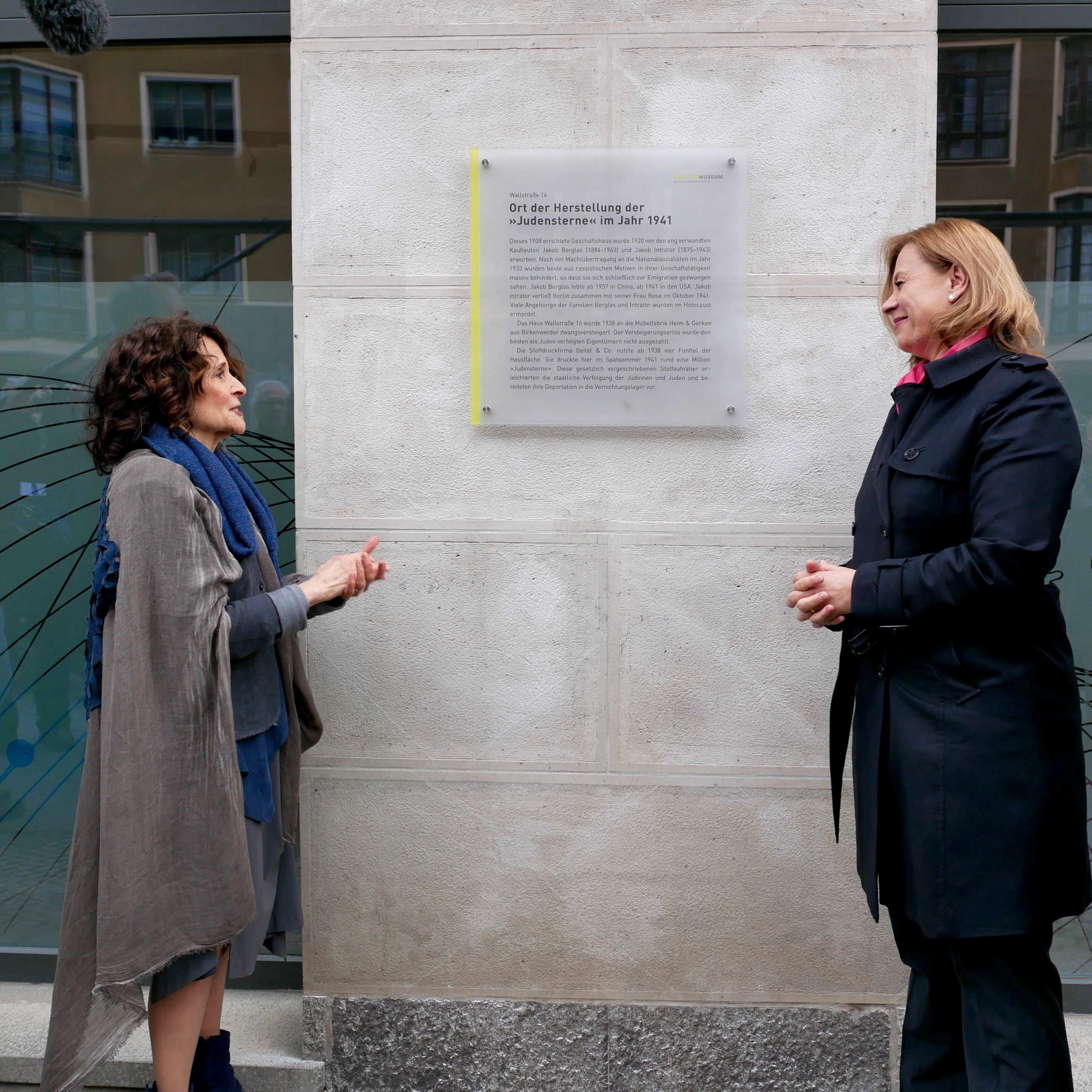On 26 October, CERN hosted, together with the Aktives Museum in Berlin, the unveiling of a plaque describing the history of a building purchased by the CERN Pension Fund in 2015.
Number 16 Wallstrasse is an attractive building constructed in 1908 and acquired by cousins Jakob Berglas and Jakob Intrator in 1920. Today, it is the property of the CERN Pension Fund. Intrator’s granddaughter, Joanne, a New York based psychiatrist, contacted the Pension Fund to explain what happened after her grandfather and uncle acquired the building, and to ask that a commemorative plaque be placed to highlight the history of the building.
Berglas and Intrator were Jewish, and although they escaped the Nazis, their building was one of many taken from Jewish people in 1930s Berlin. Some years later, it was home to a printing company that produced Jewish Stars there in the summer of 1941: the infamous symbols sewn onto the clothes of Jewish people in the Third Reich.
Joanne Intrator and several members of the wider Intrator family took part in the ceremony, together with representatives of the German and Israeli governments, and senior representatives from CERN and its Pension Fund.
“The history of CERN is closely connected with that of the Second World War,” said CERN’s Director for international Relations, Charlotte Warakaulle, at the ceremony. “Our laboratory was created as a reaction and as a contrast to what happened in Europe in the 1930s and 40s. We owe our existence to the foresight and determination of scientists and politicians from many nations, who shared a vision of reconciling a war-torn continent through culture, including science. We continue to live by this vision and to be inspired by it.”

